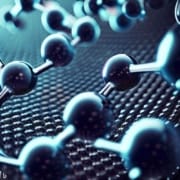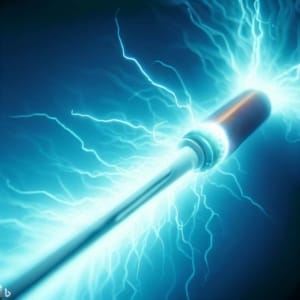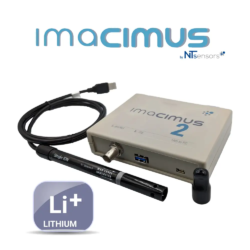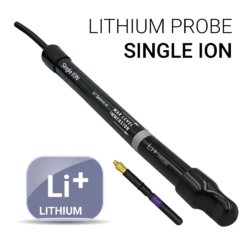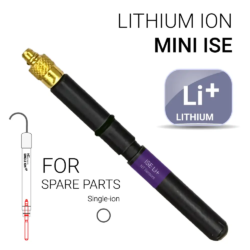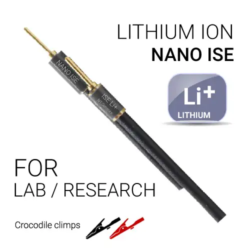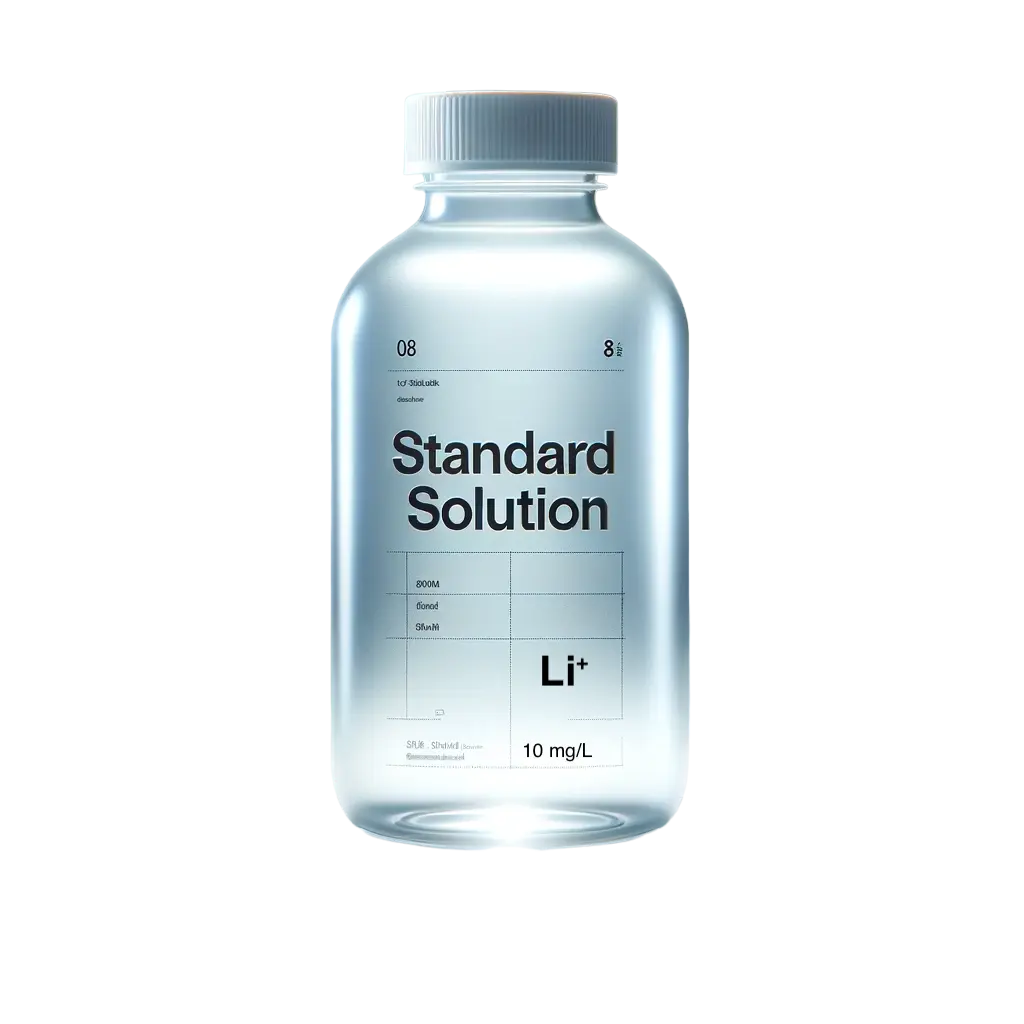The Power of Ion Selective Electrodes in Brine Analysis
Revolutionizing Lithium Detection with ISEs
The Power of Ion Selective Electrodes in Brine Analysis
READ: The Science Behind Lithium Measurement in Water
PRODUCT: ISE Lithium meter + pH
As the demand for lithium continues to soar in various industries, accurately measuring its concentration in brine is crucial. Traditional methods have been time-consuming, costly, and often unreliable. However, there is a groundbreaking solution that is changing the game: ion selective electrodes (ISEs).
ISEs are revolutionizing the field of brine analysis by offering a quick, accurate, and cost-effective way to detect and quantify lithium. These electrodes are designed to selectively measure specific ions, such as lithium, in complex mixtures like brine. By utilizing advanced technology, ISEs bypass the limitations of traditional methods and deliver precise results in real-time.
Not only do ISEs streamline the analysis process, but they also provide significant benefits to industries relying on lithium, including renewable energy, electronics, and pharmaceuticals. With this innovative technology, companies can improve their production processes, optimize resource management, and make informed decisions based on accurate lithium measurements.
In conclusion, the power of ISE sensors in brine analysis is revolutionizing how we detect and measure lithium. By embracing this cutting-edge technology, industries can unlock new levels of efficiency, sustainability, and profitability.
Challenges in traditional lithium detection methods
As the demand for lithium continues to soar in various industries, accurately measuring its concentration in brine is crucial. Traditional methods have been time-consuming, costly, and often unreliable. However, there is a groundbreaking solution that is changing the game: ion selective electrodes (ISEs).
ISEs are revolutionizing the field of brine analysis by offering a quick, accurate, and cost-effective way to detect and quantify lithium. These electrodes are designed to selectively measure specific ions, such as lithium, in complex mixtures like brine. By utilizing advanced technology, ISEs bypass the limitations of traditional methods and deliver precise results in real-time.
Not only do ISEs streamline the analysis process, but they also provide significant benefits to industries relying on lithium, including renewable energy, electronics, and pharmaceuticals. With this innovative technology, companies can improve their production processes, optimize resource management, and make informed decisions based on accurate lithium measurements.
What are ion selective electrodes (ISEs)?
Traditional methods of lithium detection in brine have long been plagued with challenges. One of the main issues is the time-consuming nature of these methods. Many techniques require lengthy sample preparation, complex instrumentation, and skilled personnel to operate the equipment. This not only increases the overall cost of analysis but also slows down the decision-making process.
Another challenge is the lack of accuracy and reliability. Traditional methods often rely on complex chemical reactions or physical separation techniques to determine lithium concentration. These processes can be prone to errors, especially when dealing with complex mixtures like brine. Inaccurate results can have serious implications for industries relying on lithium, leading to inefficient production processes or subpar product quality.
Furthermore, traditional methods may not be cost-effective, especially for large-scale operations. The need for expensive equipment, reagents, and skilled personnel can significantly impact the overall cost of analysis. This can be a deterrent for companies looking to optimize their resource management and minimize expenses.
How do ISEs work in brine analysis?
Ion selective electrodes (ISEs) are devices that can selectively measure the concentration of specific ions in a solution. These electrodes are made up of a sensing element, usually a membrane, that selectively interacts with the target ion while excluding interference from other ions present in the sample. When the target ion comes into contact with the sensing element, a potential difference is generated, which can be measured and correlated to the concentration of the ion in the solution.
ISEs are designed to be portable, easy to use, and offer real-time measurements. They can be used in various applications, including environmental monitoring, clinical diagnostics, and, in our case, lithium detection in brine. The selectivity and sensitivity of ISEs make them an ideal choice for accurately quantifying lithium concentration in complex mixtures.
Advantages of using ISEs in lithium detection
ISEs work based on the principle of selective ion exchange. The sensing element of an ISE contains a membrane that is specifically designed to interact with the target ion of interest – lithium, in our case. This membrane is typically composed of a polymer matrix with ionophores that have a high affinity for lithium ions.
When the ISE is immersed in the brine sample, lithium ions from the brine selectively bind to the ionophores in the membrane. This binding process creates a potential difference across the membrane, which can be measured by the ISE device. The magnitude of the potential difference is directly proportional to the concentration of lithium ions in the brine, allowing for accurate quantification.
To ensure reliable measurements, it is essential to properly calibrate the ISE device before use. Calibration involves exposing the ISE to solutions with known lithium concentrations and creating a calibration curve. This curve can then be used to convert the potential difference readings from the ISE device into lithium concentration values.
Applications of ISEs in the lithium industry
The use of ISEs in lithium detection offers several advantages over traditional methods. Firstly, ISEs provide real-time measurements, allowing for immediate decision-making and process optimization. This can be particularly beneficial for industries that rely on lithium, as they can adjust their production processes based on accurate and up-to-date information.
Secondly, ISEs are highly sensitive and selective, ensuring accurate quantification of lithium concentration in complex brine mixtures. The ability to selectively measure specific ions reduces the risk of interference from other ions present in the sample, leading to more reliable results.
Additionally, ISEs are portable and user-friendly, making them suitable for both laboratory and field applications. Their compact size and ease of use allow for on-site analysis, eliminating the need for sample transportation and minimizing the time required for analysis.
Lastly, ISEs offer a cost-effective solution for lithium detection. Compared to traditional methods that require expensive equipment and reagents, ISEs are relatively affordable. They also have a longer lifespan, reducing the need for frequent replacements or maintenance.
The applications of ISEs in the lithium industry are vast and diverse. One of the main areas where ISEs have found utility is in lithium extraction and production. By accurately measuring lithium concentration in brine, companies can optimize their extraction processes, ensuring maximum yield and resource utilization. This leads to increased efficiency and cost savings.
ISEs are also valuable in lithium battery manufacturing. Lithium-ion batteries are used in various industries, including renewable energy and electric vehicles. Ensuring the quality and consistency of lithium used in battery production is crucial for performance and safety. ISEs provide a reliable and efficient method for monitoring lithium concentration and controlling the quality of lithium used in battery manufacturing.
Furthermore, ISEs have applications in pharmaceuticals, where lithium is used in the treatment of certain mental health conditions. Accurate measurement of lithium concentration in pharmaceutical formulations is essential to ensure the safety and efficacy of these medications. ISEs offer a quick and reliable method for pharmaceutical companies to perform quality control checks on their lithium-containing products.
Choosing the right ISEs for brine analysis
When comparing ISEs with other lithium detection methods, several factors come into play. Traditional methods, such as atomic absorption spectroscopy and inductively coupled plasma mass spectrometry, offer high accuracy and precision. However, they are time-consuming, require skilled personnel, and often involve expensive equipment.
In contrast, ISEs provide real-time measurements, are user-friendly, and offer cost-effective solutions. While they may have slightly lower accuracy compared to traditional methods, the convenience and efficiency they offer make them a preferred choice for many industries. The ability to obtain immediate results and make timely decisions outweighs the slight compromise in accuracy.
It is worth noting that ISEs are not suitable for all applications. In cases where extremely low detection limits are required, or when complex sample matrices are involved, other techniques may be more appropriate. However, for most routine lithium detection in brine, ISEs provide an excellent balance between accuracy, convenience, and cost-effectiveness.
Tips for accurate and reliable lithium detection with ISEs
When selecting ISEs for brine analysis, several factors need to be considered. Firstly, the selectivity of the ISE towards lithium is crucial. The sensing element should have a high affinity for lithium ions and exhibit minimal interference from other ions commonly found in brine, such as sodium and potassium. Conducting thorough testing and calibration of the ISE with representative brine samples is essential to ensure accurate results.
Secondly, the durability and lifespan of the ISE device should be taken into account. Depending on the frequency and conditions of use, the electrode may need to withstand prolonged exposure to brine and other harsh chemicals. Choosing a robust and reliable ISE device will minimize the need for frequent replacements and maintenance, reducing overall costs.
Lastly, the compatibility of the ISE device with existing laboratory or field analysis systems should be considered. Integration with data logging software or other analysis equipment can streamline the workflow and enhance data management capabilities.
The future of lithium detection with ISEs
To ensure accurate and reliable lithium detection with ISEs, the following tips should be followed:
1. Properly calibrate the ISE device using solutions with known lithium concentrations. This will establish a calibration curve that can be used to convert potential difference readings into lithium concentration values.
2. Regularly clean and maintain the ISE device to prevent contamination and ensure accurate measurements. Follow the manufacturer’s guidelines for cleaning and storage.
3. Conduct routine quality control checks to verify the performance of the ISE device. This can be done by analyzing certified reference materials with known lithium concentrations.
4. Use representative brine samples for testing and calibration. The composition and characteristics of the brine can vary, so using samples that closely resemble the actual brine being analyzed will yield more accurate results.
5. Follow proper sample handling and preparation techniques to minimize potential sources of error. Ensure proper sample storage conditions and avoid cross-contamination between samples.
6. Keep up-to-date with advancements in ISE technology and industry best practices. Regularly review literature and attend conferences or seminars to stay informed about the latest developments in lithium detection.
By following these tips, industries can maximize the efficiency and reliability of their lithium detection processes, leading to improved production outcomes and informed decision-making.

